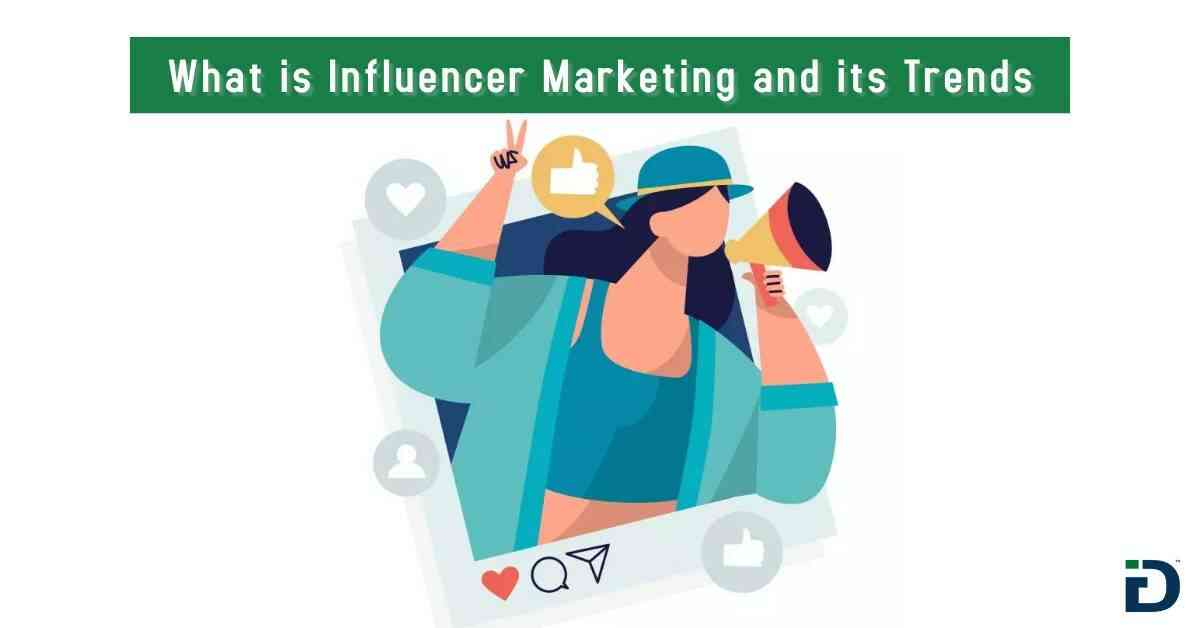What Is Influencer Marketing And Its Trends
- - Category: Viral Marketing
- - 26 Dec, 2022
- - Views: 336
- Save

The emergence of social media has simplified the process for brands to source and collaborate with influencers.
The emergence of social media has simplified the process for brands to source and collaborate with influencers in need of influential people to talk about their company or their products. As most purchasers would naturally skim through the reviews of a product before purchasing online, people have always looked to other consumers to assist them in making purchasing decisions.
Brands pay a fee to the individual/influencer to promote their products or services to their followers through influencer marketing, a type of social media marketing trend in recent times.
Initially, Influencer marketing was introduced with celebrity endorsements. However, social content creators have specific targeted audiences who can make your brand or products visible to their audience set and act as an influencer to purchase from them. On social media platforms like Facebook and Instagram, the fans of such smaller accounts are usually incredibly active.
Different kinds of social media influencers:
1. Nano-influencers
Those with fewer than 10,000 followers on social media are considered Nano-influencers. They aren’t in any way “influencers” in the traditional sense, and most of their posts consist of ordinary content like memes, and pictures of their friends and family. Their compact size leads to more involved and devoted followers, which enables their suggestions to seem so much more authentic.
2. Micro-influencers
A micro-influencer has between 1,000 and 100,000 followers on social media, which is more than the popularity of the average individual but less than the audience of a celeb. Despite their limited reach, brands nonetheless value them since they are more skilled than mega and macro influencers and have engaged audiences.
3. Macro-influencers
Macro influencers with between 100,000 and 1 million followers, but in contrast to topmost mega influencers, they are becoming well-known through digital activities like filming, or providing niche content.
Macro influencers are renowned as authorities in their industry, routinely releasing original content as well as steadily expanding their network.
4. Mega-influencers
A mega influencer has at least 1 million fans or subscribers on social media. Most of these personalities are A-list superstars who have become eminent for their skills on media platforms and in reality.
Therefore, among other talented, famous people, mega influencers are primarily musicians, actors, and sports stars.
Influencer marketing trends for 2023 that you should be aware of:
1. Brands will be hugely supportive of micro-influencers.
After the pandemic, we know that consumers want genuine connections with the brands and products they use, and while micro-influencers may not have a huge follower list, they still have a significant social media presence.
Their performance is influenced by several elements, including authenticity and a higher probability of developing sincere collaborations with businesses.
2. The utilization of video content by brands will rise.
Recently, marketing professionals have been raving about video content. Through the pandemic, they were able to reflect and present their true selves on video recording platforms. Today, everyone has an effortless look at it, from the work-from-home scenario to depictions on public platforms. Getting relatable is the “in” thing right now, and that’s what’s causing the video to gain an increase in views and comments.
3. More influencers will be on-boarded by brands to manage their account.
In the past, brands collaborated with social media influencers to market their goods to a wider audience. To manage their accounts, brands are now hiring creators and influencers.
In terms of social media expertise, influencers frequently surpass corporate managers. Additionally, they are friends with other influencers who may help firms form alliances and broaden their reach.
4. The increasing popularity of Livestream shopping.
Livestream shopping has a marketing strategy, which originated and gained popularity in China, primarily targeting Generation Z and Millennials, who are the primary consumers of social networks and online streaming.
Livestream shopping refers to the practice of allowing viewers to place product purchases while watching an influencer discuss and test out a product live on a platform like Instagram, or Facebook. Concerns and queries about the product can be raised by viewers on the spot which are answered by the influencer in tandem with the branding team.
Since it combines the conversational and shopping guidance aspect with entertainment, it is a great digital marketing service to boost sales.
Live Shopping, a feature that Instagram introduced, enables users to purchase things directly from Instagram Live. This is something that will undoubtedly accelerate this trend, especially in light of Instagram’s enormous wide presence.
5. The emergence of content created by influencers
One of the powers of influencers is the ability to create content, which is why more and more firms are collaborating with them to generate pictures for their social media platforms. These posts do not have to be sponsored by a brand. In reality, the best influencer-generated material sometimes appears without your having specifically asked the influencer to do so.
People often mix up affiliate marketing and Influencer marketing. Here’s a write-up to help you gain clarity on how affiliate marketing differs from influencer marketing.



